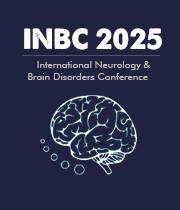Title : Seeing the signs: Narrative review on neuropsychiatric symptoms as precursors of Parkinson’s disease
Abstract:
Parkinson’s disease is a neurodegenerative disorder classically defined by its motor symptoms, even though neuropsychiatric symptoms (NPS) present several years before disease onset. These NPS include sleep disorders, depression, anxiety, apathy and cognitive impairment. This review highlights neuroimaging-based evidence and pathophysiological understanding behind the development of each symptom.
Increasing studies show that earliest changes in Parkinson’s extend beyond the basal ganglia including changes in Amygdala and Prefrontal cortex, atrophy of anterior cingulate cortex, reduced efficiency of frontostriatal networks and disrupted communication between limbic and cortical regions causing emotional dysregulation. Additionally, many prodromal NPS stem from disruption of non-dopaminergic systems such as serotonergic, cholinergic and noradrenergic systems which may have compensatory adaptations in early disease phase. Disease models like Braak’s staging, the “body-first” hypothesis and “brain-first” hypothesis corresponding to different ?-synucleinopathy progression pathways are compared in relation to development of NPS.
Findings support early brainstem involvement in REM sleep behavior disorder, with α-synuclein detected in cerebrospinal fluid and peripheral tissues, and in REM atonia regulating nuclei such as the sublaterodorsal tegmental nucleus and ventromedial medulla, making it a crucial biomarker as well a predictor of Parkinson’s. Similarly, Depression in PD arises from neuroinflammatory mechanisms in the dorsolateral prefrontal cortex, distinguishing it from primary depressive disorder. Reduced Dopamine transporter binding has been seen in RBD, apathy, depression and anxiety in patients with neuropsychiatric symptoms but no motor signs, indicating early dopaminergic degeneration in the prodromal phase of Parkinson’s disease. Despite their prevalence and impact on quality of life, these symptoms remain underrecognized leading to a lost opportunity for an intervention within the neuroprotective window.
Furthermore, there is a paucity of guidelines to manage these symptoms; most symptoms are treated as primary psychiatric disorders with limited evidence supporting their efficacy in Parkinson’s disease patients. Pharmacologic or non-pharmacologic treatment options are available for some symptoms while others lack targeted therapeutic trials altogether. Stronger collaboration between neurology, psychiatry and other specialties is needed to ensure these early symptoms are not overlooked. This review aims to bridge the gap between current evidence, recent advances, challenges in diagnosis, and the practical potential of using neuropsychiatric symptoms as markers of early Parkinson’s disease. It serves as a learning guide that translates data into clinical insights, especially as previous reviews have primarily focused on RBD and depression while other symptoms have received limited attention.



